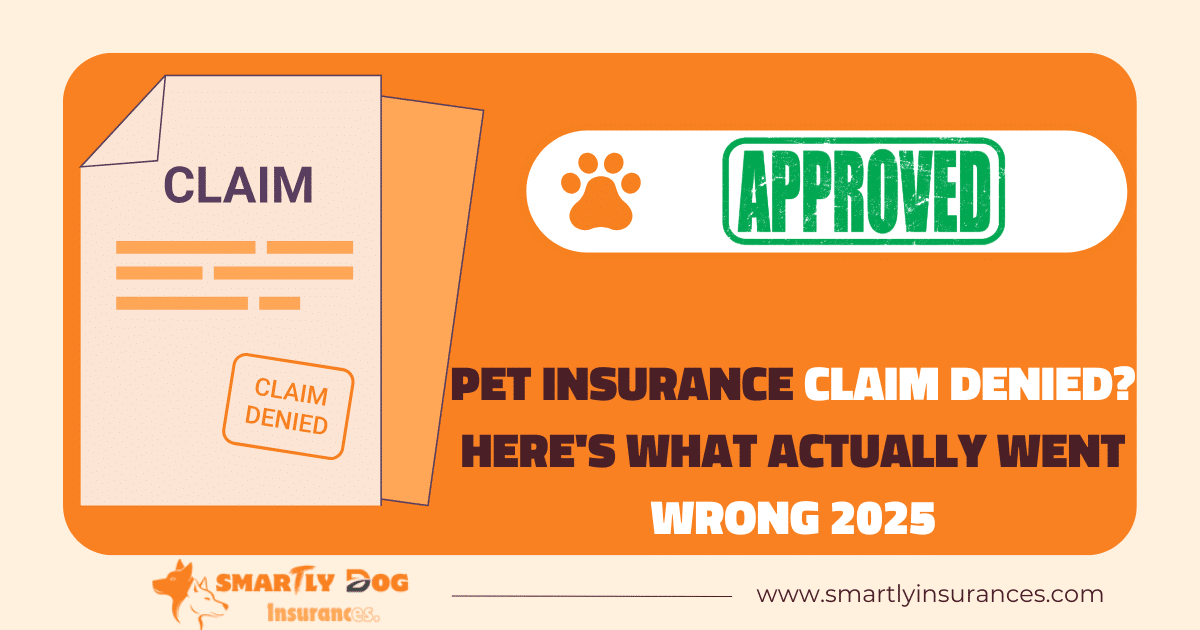Pet insurance claims in Britain face a shocking 37% denial rate. The pet insurance market has grown into a $900-million business in the United States. Many pet owners feel frustrated and financially burdened when insurance companies deny their claims.
Research reveals that pet owners who appeal denied claims succeed about half the time. Pet owners should understand common reasons for claim rejections. Pre-existing conditions and incomplete documentation often lead to denials. Your pet insurance claim might get rejected or your insurance company might refuse to pay. We’ll show you exactly how to handle these situations and get the coverage you deserve.
Common Reasons for Pet Insurance Claim Denials
Pre-existing health issues are the biggest reason why pet insurance companies deny claims. These conditions include any health problems your pet showed signs of before your policy started working, even if they didn’t get an official diagnosis.
Pre-existing conditions explained
Pre-existing conditions include many different health issues. We looked at chronic problems like cancer, allergies, and heart disease. Insurance companies have vet specialists who really check medical records before they let you enroll. Things are changing though – some insurance companies now want to lift these restrictions if your pet stays healthy for two years.
Missing documentation issues
Insurance companies often reject claims when paperwork isn’t complete. You need these documents to get your claim approved:
- Itemized veterinary bills
- Complete medical records
- SOAP transcripts (detailed treatment reports)
- Proof of payment receipts
Waiting period violations
Insurance companies use waiting periods to protect themselves from false claims. Different health conditions have different waiting times. Illness coverage usually needs 14-15 days, while problems with bones and joints need 6-12 months before coverage kicks in. On top of that, any health issues that pop up during these waiting periods automatically become pre-existing conditions, and you won’t get coverage for them.
How to Check If Your Claim Was Wrongly Denied
A denied pet insurance claim requires you to really look at the denial letter carefully. You should cross-reference the specific reason in your denial notice with your policy’s terms and conditions.
Review your policy details
Take time to break down your policy’s coverage limits, which typically include maximum incident benefits, annual caps, and lifetime limits. Check if your claim falls within any waiting periods – these vary by state and policy type. The policy’s exclusions and terms need special focus, particularly those related to pre-existing conditions or bilateral health issues.
Gather supporting evidence
You need solid documentation to build a strong case. Your evidence file should include:
- Original veterinary invoices
- Complete medical history records
- Vaccination documentation
- Medication logs
- Diagnostic test results
The best first step is to contact your insurance provider’s customer service to clarify the denial. A representative can help you understand insurance jargon and determine if an appeal makes sense. Some denials happen because of simple data entry errors or incorrect patient information that can be fixed quickly.
Note that insurance companies must really explore claims before making decisions. So if you notice discrepancies between your policy coverage and the denial reason, you have grounds to challenge the decision. Insurance companies in most states must process claims in good faith, which means they need to conduct reasonable diligence in their investigation.
Steps to Appeal a Denied Pet Insurance Claim
You have 14 days from the denial decision to file an appeal. Start by asking your insurance provider’s claims department about why they denied your claim.
Contact your provider
Write a formal appeal letter that explains why you disagree with their decision. Send your letter to the insurer’s appeals department by email, fax, or mail. Make sure you write down the case number and your representative’s name.
Submit additional documentation
Put together a complete appeal package with these documents:
- Updated medical records
- Lab results and x-rays
- Itemized invoices
- Supporting documentation from your vet
Get vet support
Ask your veterinarian to write a detailed letter that addresses why your claim was denied. The letter should be on official letterhead or come directly from your vet’s email. Your vet can also talk to the insurance company’s veterinary relations team.
Follow up effectively
You can check your appeal status on the provider’s website or customer portal. Insurance companies usually process appeals within 15-20 business days. Keep detailed records of all communications and track your progress regularly. If your first appeal doesn’t work, you can ask for a second review with new evidence. The key is to stay persistent throughout the process.
Expert Tips to Prevent Future Claim Denials
Proper documentation is your best defense against future claim denials. Industry data shows 85% of pet owners prefer veterinarians who submit claims directly to insurance companies. This preference highlights why organized record-keeping matters.
Keep detailed medical records
Your pet’s medical records should work like a medical diary. Documentation must include vaccination histories, treatment plans, and detailed notes from every vet visit. Electronic copies of all medical documents help create a clear timeline of your pet’s health. You should document every interaction with your veterinarian and add dates and outcomes of treatments.
Pro tip: Ask your vet to add your pet insurance policy number in their records. This simple step makes the claim process smoother and cuts down documentation errors.
Understanding policy terms
Knowledge of your policy details forms the foundation of successful claims. You should know these vital elements:
- Annual deductibles and coverage limits
- Waiting period requirements for different conditions
- Specific exclusions and limitations
- Policy modifications or adjustments
Your policy’s reimbursement structure prevents surprises during claim submissions. Note that outdated contact information can trigger claim denials, especially when you move to a new place.
These preventive measures will substantially reduce claim denials and ensure smoother reimbursements for your pet’s care.
Pet insurance claim denials can feel overwhelming, but understanding the process changes everything. Pet owners who arm themselves with proper documentation and policy knowledge substantially reduce their chances of claim rejections.
Statistics reveal that half of all appealed claims get reversed. This fact proves why challenging unfair denials matters. Detailed medical records, clear understanding of waiting periods, and up-to-date policy compliance serve as your best defense against future claim issues.
Pet insurance claims succeed through preparation and persistence. Pre-existing conditions pose a common challenge, yet proper documentation and timely appeals help secure the coverage your pet needs. Your relationship with the veterinarian and insurance provider creates a foundation that streamlines claims processing.
These proactive steps protect your pet’s health and financial security. Pet insurance delivers the best results when you know how to use it properly.



